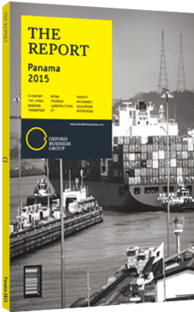Panama capitalising on opportunities in solar and wind
In a country with over 60% of its electricity generation capacity powered by hydroelectric plants, renewable energy is no novelty in Panama. However, the need to diversify the generation base has led to interest in other technologies, especially wind and solar. Panama has good resources available for both. The average annual sum of global horizontal irradiance for the central region approaches 5-5.5 KWh per sq metre per day, compared to Germany’s less than 3.01 KWh per sq metre per day, translating to over 60% more sunshine.
Solar
The Latin American solar industry has been flagged by Greentech Media (GTM) as one of the most interesting markets, forecasting that it could represent 2% of global solar market demand by 2018. Solar generation also makes sense for a country where energy needs peak during hot, dry seasons, when hydroelectric power is scarce. It also makes sense economically in a country where the spot market’s marginal price is over $270. Furthermore, Panama allows all solar energy operators to import equipment free of sales tax and import duty, as well as apply for accelerated depreciation and a 5% tax credit.
The first utility-scale projects in Panama started in 2014 and a large boom is expected. According to Camilo Patrignani, CEO of Greenwood Energy, a clean energy investment company focused on the US and Latin America, Panama is one of the most attractive solar markets. The National Public Services Authority has awarded 67 solar energy generation licences, which amounts to over 1100 MW of installed capacity. The contract for the 120-MW Planta Solar Fotovoltaica Penonomé was awarded to local player Avanzalia Panamá. ECO solar, with Solarcentury as a construction partner, is building the Divisa Solar plant with a $17.8m investment. The company announced that the plant should be operational by the end of 2015 and would sell only to the spot market. The remaining 54 permits are provisional licenses for over 800 MW, with no defined dates.
Furthermore, in November 2014 the government held a tender for solar power plants totalling 60 MW. The government expects competitive power-purchase agreement prices at $100-120 per MWh. With 31 bidders and over 600 MW in offers, the installation of a solar park of that scale would place Panama on the solar map, representing an almost six-fold increase from current installed capacity, estimated at slightly over 10 MW. Meanwhile, the winning bidders for Empresa de Transmisión Eléctrica’s tender Compañía Solar de Panamá, Panasolar2, SDR Energy Panama (Progreso), SDR Energy Panama (Boqueron) and Solpac Investment were awarded a grand total of 66 MW under contracts that span January 2017 to December 2036.
Wind
Although less prominent than solar, wind energy may be poised for growth. The Penonomé wind park, planned for a maximum capacity of 270 MW, went into operation in December 2014. The initial phase of 55 MW is part of a three-stage plan for the park, from which 120 MW will be delivered as a fixed-price contract and the rest sold on the spot market. Union Eólica Panameña spent $140m on the first phase, while the $430m second and third stages will be mostly financed by InterEnergy Holding, with a $300m loan from the World Bank’s International Finance Corporation.
Additionally, there are eight other provisional licences for wind generation in the country. From 17 MW to 225 MW, total capacity will add up to 865.8 MW, with six parks already under construction and planned to come on-line by the end of 2015. Another 17 licences are still in the pipeline, meaning Panama’s wind energy segment is poised to receive a large influx of capital, estimated at over $1.6bn in required financing.
With one of the most interesting pipelines in the region, Panama seems to be a paradise for renewable energy. Positive policy, fiscal incentives and exorbitant spot market energy prices make investments highly profitable. However, this will also depend on interconnection capacity availability and the entire raft of permits coming on-line, which would mean around 300 MW of solar and 860 MW of wind power by 2016. This would lead to 44% of power deriving from renewables.
You have reached the limit of premium articles you can view for free.
Choose from the options below to purchase print or digital editions of our Reports. You can also purchase a website subscription giving you unlimited access to all of our Reports online for 12 months.
If you have already purchased this Report or have a website subscription, please login to continue.

